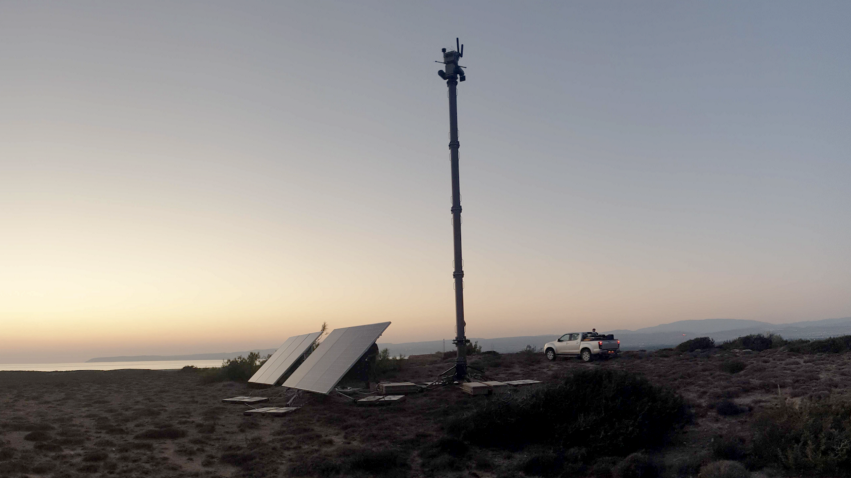
Anduril’s Sentry Tower will be part of the UK test project. (Anduril)
DSEI: The UK Ministry of Defence has reached a new agreement with technology firm Anduril to run a pilot program exploring how artificial intelligence can be used for force protection.
The two-year, £3.8 million ($5.2 million) agreement was awarded as part of the TALOS project from the MoD, which seeks to bring new technologies into the military with a focus on command and control. Notably, the contract is set up through a subscription model, a new type of contract for the MoD.
The trial system will be built around the company’s Lattice artificial intelligence software, which plugs into existing hardware to automate sensing of potential threats and offer rapid response options for operators – cutting the sense-and-shoot timeframe significantly.
“This state-of-the-art technology will give our serving men and women help by identifying and assessing external threats in nanoseconds,” said Gen. Sir Patrick Sanders, commander of UK Strategic Command, in a statement. “The artificial intelligence at the heart of this system has great potential to protect our people and sites. It’s another success for our innovation team at jHub, working closely with Anduril to help create a bespoke system, from idea to implementation at pace, to meet the specific requirements of our Armed Forces.”
Paul Hollingshead, head of UK and NATO effort at Anduril, told Breaking Defense that the choice of a subscription model is a big step for MoD as it tries to find partners in the commercial technology sector.
“This is not how the MoD has ever done business, but its trying to adopt some of the best practices of the commercial marketplace,” he said. “It puts the onus on us to not only deliver the original standard they asked for, but to continually develop functionality, continually build on the capability of the system as its delivered in order to keep that subscription model.”
If that model sounds familiar, that’s because Anduril signed a similar subscription model for force protection based around Lattice with the Pentagon in July. Like that agreement, the UK deal will involve the company linking Lattice to a number of its counter-UAS systems, such as its Sentry Towers. However, Hollingshead stressed that the AI software can be integrated with many third-party technologies, including more traditional air defense systems.
“We expect other vendors, other suppliers will come with a range of ideas and ride on the development that is being done by Anduril to integrate their own platforms” onto Lattice, he said. “Once you’re fusing all of these different systems together, the benefit to the MoD is substantially greater.”
Hollingshead did not say exactly where the system would be tested, but he did say that the system would not be confined to a test range. Instead, it will go live on an operational base during the term of the contract.
One challenge the UK is looking to work on with the system is small UAS systems that could be used as suicide drones. It’s not a new problem, but in May, Gen. Mark Carleton-Smith, the UK Army’s chief of the general staff, said that the conflict between Azerbaijan and Armenia over Nagorno-Karabakh showed how effective such small UAS systems could be.
“[We have] a renewed emphasis on ground-based air defense, which has not been a military challenge for us over the last 20 years. It really is today,” Carleton-Smith said. “I was speaking not that long ago to a retired Army chief, among whose distinctions it was that he could claim to be the last Army chief to have had a spear thrown at him. I countered by saying I thought I was the first Army chief to have been bombed by a UAV, and you know, that is how the warfare is changing.”






















